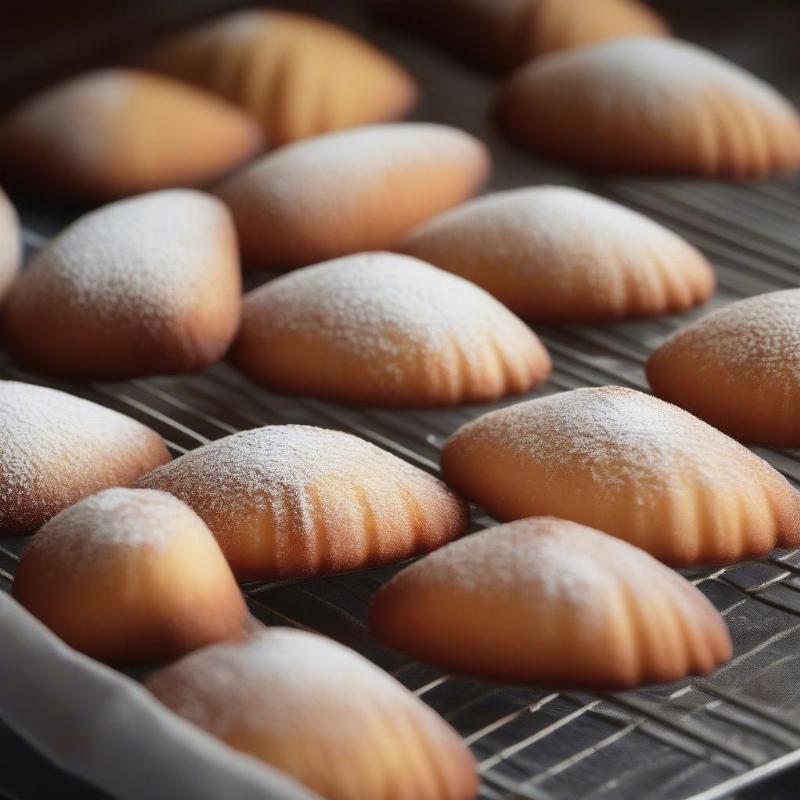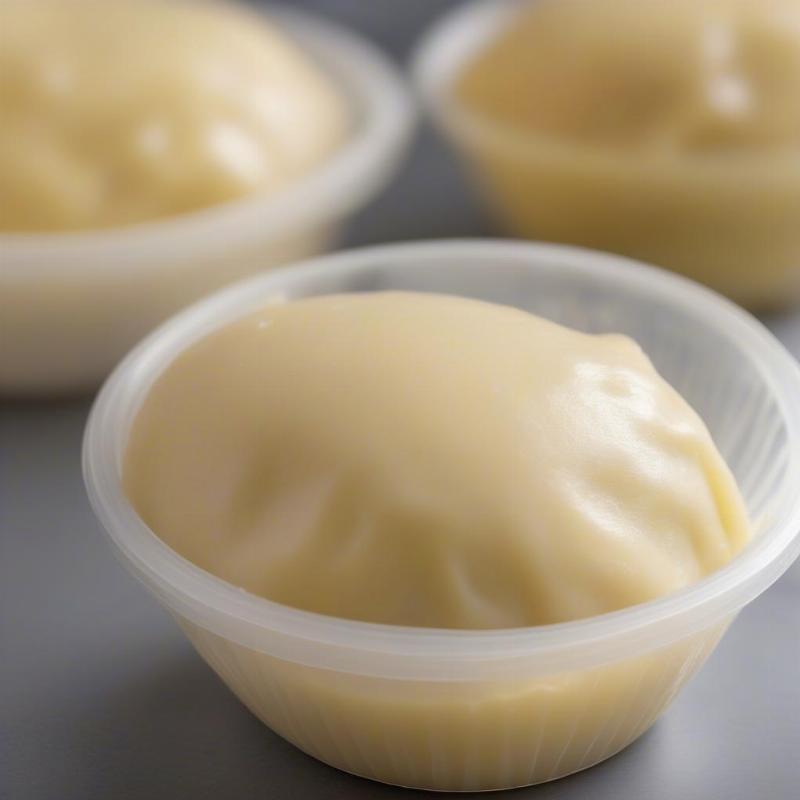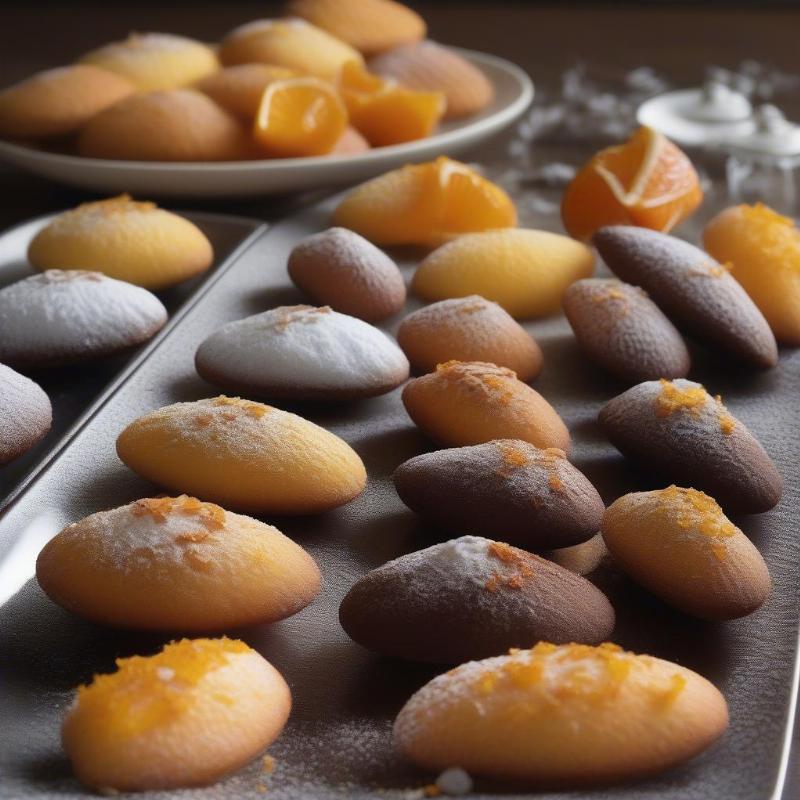Madeleines. Those delicate, shell-shaped cookies with their signature hump. They’re a symbol of French elegance, a taste of childhood nostalgia, and surprisingly easy to make once you know the secrets. This guide to the Best Madeleine Recipe will unlock the mysteries of these delightful little cakes, providing you with everything you need to bake a batch that would make any Parisian pâtisserie proud. From the essential ingredients to troubleshooting tips, get ready to embark on a baking adventure and discover your new favorite cookie.
Table Of Contents
- Understanding the Key to the Best Madeleine Recipe
- The Best Madeleine Recipe: Ingredients and Equipment
- Mixing the Perfect Madeleine Batter
- The Chilling Period: A Crucial Step for the Best Madeleine Recipe
- Baking the Perfect Madeleines
- Troubleshooting Tips for the Best Madeleine Recipe
- Variations and Serving Suggestions
- FAQ: Your Madeleine Questions Answered
- The Joy of Baking Madeleines
Understanding the Key to the Best Madeleine Recipe
What makes a madeleine truly exceptional? It’s the delicate balance of flavors, the signature hump, and that characteristic golden-brown crust. The perfect madeleine is slightly crisp on the outside, yet soft and tender on the inside, with a subtle buttery flavor that melts in your mouth. This all comes down to using the best madeleine recipe and understanding a few crucial techniques.
First, the batter needs a rest. This crucial chilling period allows the gluten to relax, leading to a more tender crumb. Don’t rush this step! Second, the temperature contrast between the cold batter and the hot oven is essential for creating that iconic hump. Finally, using quality butter is non-negotiable. It’s the star of the show, providing that rich, buttery flavor that defines a perfect madeleine.
 Perfect Madeleine Cookies
Perfect Madeleine Cookies
The Best Madeleine Recipe: Ingredients and Equipment
Ready to get started? Here’s what you’ll need for the best madeleine recipe:
- 1 cup (2 sticks) unsalted butter, melted and cooled slightly
- 1 1/2 cups all-purpose flour
- 1 1/2 teaspoons baking powder
- 1/4 teaspoon salt
- 2 large eggs
- 1 cup granulated sugar
- 2 teaspoons pure vanilla extract
- Zest of one lemon (optional, but highly recommended)
For equipment, you’ll need a madeleine pan, preferably non-stick, a whisk, a rubber spatula, measuring cups and spoons, and a fine-mesh sieve. A stand mixer is helpful, but not essential.
Mixing the Perfect Madeleine Batter
The process of making madeleines is surprisingly simple. First, whisk together the dry ingredients: flour, baking powder, and salt. In a separate bowl, whisk together the eggs and sugar until pale and slightly thickened. This step adds air to the batter, contributing to the light texture. Next, gently whisk in the melted butter, vanilla extract, and lemon zest (if using). Finally, gradually add the dry ingredients to the wet ingredients, mixing until just combined. Be careful not to overmix!
The Chilling Period: A Crucial Step for the Best Madeleine Recipe
Now comes the essential resting period. Cover the bowl with plastic wrap and refrigerate for at least 2 hours, or preferably overnight. This chilling time is crucial for developing the flavor and texture of the madeleines. Ever wondered why some madeleines fall flat? Skipping the chilling step is often the culprit.
 Madeleine Batter Chilling in the Refrigerator
Madeleine Batter Chilling in the Refrigerator
Baking the Perfect Madeleines
Preheat your oven to 400°F (200°C). Lightly grease and flour your madeleine pan. This prevents sticking and ensures clean release. Fill each madeleine mold about three-quarters full. Don’t overfill, as the batter will expand during baking. Bake for 10-12 minutes, or until the edges are golden brown and the center springs back lightly when touched. Immediately remove the madeleines from the pan and cool on a wire rack.
Troubleshooting Tips for the Best Madeleine Recipe
- Madeleines not developing a hump? Ensure your batter is well-chilled and your oven is preheated to the correct temperature. A hot oven is essential for that dramatic rise.
- Madeleines sticking to the pan? Make sure you’ve greased and floured the pan thoroughly. A non-stick pan is also highly recommended.
- Madeleines too dense? Avoid overmixing the batter. Mix until just combined.
Variations and Serving Suggestions
Once you’ve mastered the basic best madeleine recipe, feel free to experiment with different flavors. Add a touch of citrus zest, a drizzle of melted chocolate, or a dusting of powdered sugar. Serve your madeleines warm with a cup of tea or coffee for the ultimate afternoon treat.
 Variations of Madeleines
Variations of Madeleines
FAQ: Your Madeleine Questions Answered
Q: How long do madeleines last?
A: Madeleines are best enjoyed fresh, but they can be stored in an airtight container at room temperature for up to 3 days.
Q: Can I freeze madeleine batter?
A: Yes, you can freeze madeleine batter for up to 2 months. Thaw overnight in the refrigerator before baking.
Q: Why do madeleines have a hump?
A: The hump is a result of the temperature contrast between the cold batter and the hot oven.
Q: Can I use a different type of flour?
A: All-purpose flour is recommended for the best results. Using other types of flour may alter the texture.
Q: What is the significance of the madeleine shape?
A: The shell shape is traditional and adds to the delicate charm of these cookies. It also helps to create a crisp exterior.
The Joy of Baking Madeleines
Making madeleines is more than just following a recipe; it’s an experience. It’s the anticipation of that first bite, the aroma filling your kitchen, the simple pleasure of sharing a warm, freshly baked treat with loved ones. So, gather your ingredients, preheat your oven, and discover the magic of the best madeleine recipe. Your taste buds will thank you.
